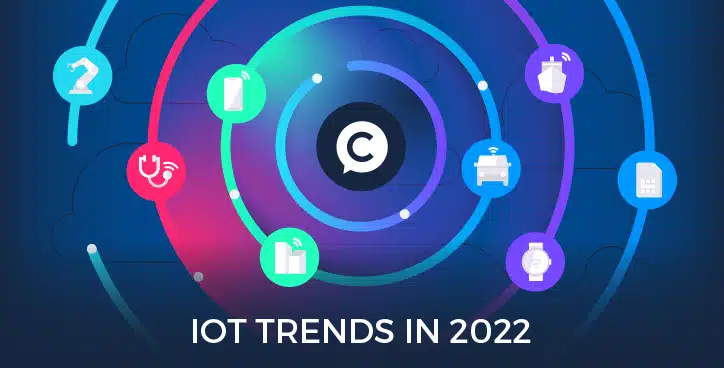By Michael Rivera, PhD
The Industrial Internet of Things market continues to grow at an impressive pace. It was worth north of $77 billion in 2020 and is expected to post a CAGR of 7.4% to reach over $110 billion by 2025. The COVID19 pandemic has accelerated the shift to Industrial IoT as manufacturers had to adapt and increasingly rely on remote monitoring and AI solutions to streamline operations for cost management. As the world emerges from the pandemic and manufacturers adapt to disrupted global supply chains, these industrial IoT trends are worth watching out for in 2022.
Increasing Investments in Cybersecurity
Industrial IoT powers automation that increases efficiency. The various sensors, modules, and components that make up industrial IoT systems generate a treasure trove of data that’s seamlessly shared across the network, much of which may be accessed by third parties.
This presents significant cybersecurity challenges for manufacturers. The rise of sophisticated cyberattacks, particularly those involving ransomware, has made it necessary for manufacturers to increase cybersecurity investments to prevent data leaks and disruptions in operations.
Transitioning to Edge Computing
It’s partly due to cybersecurity risks that many industries are now transitioning to edge computing. Data from local IoT devices is no longer sent for processing in the cloud. The processing power and data storage are kept as close as possible to the point from where the data is being generated. The data doesn’t need to leave the factory and that limits its exposure to third parties.
When fused with artificial intelligence, edge computing can bring real-time intelligence to manufacturing processes. AI computation is done at the edge of the AI network, allowing manufacturers to become more agile and enabling them to make persistent improvements to their operations.
Striving for Energy Optimization
Energy sustainability is a key goal that manufacturers across the globe are now actively pursuing. In addition to reliance on renewable sources, it’s also important to optimize the use of energy in factories to limit overall consumption.
Industrial IoT sensors and systems help manufacturers achieve this goal by providing them with a holistic view of the energy system across their entire manufacturing footprint. The data can then be utilized to make optimizations for a more eco-friendly process.
As these trends related to increasing investments in cybersecurity, transitioning to edge computing, and striving for energy optimization continue to unfold, understanding how to adapt operationally and refine one’s strategy accordingly is paramount. Thinaer’s team of PhDs, data scientists, business strategists, technologists, and artists are positioned to help the world’s leading enterprises optimize their operations and enact digital transformation at scale. To learn more about who we are and capitalize on the 2022 trends with Thinaer’s fully intelligent IoT platform, contact us today!

